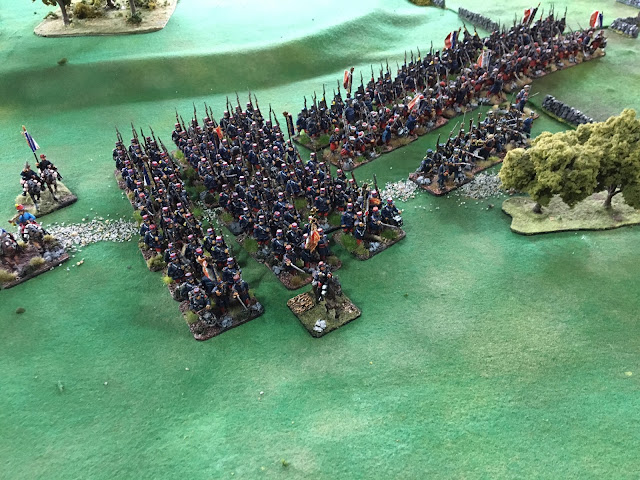Although the dragoons were the most numerous of all the Russian cavalry types in the Napoleonic Wars nothing speaks of eastern European cavalry more than the hussars. There is something inherently romantic about hussars, especially Russian hussars. Any mention of them sets my mind racing with those spectacular movie scenes with the dashing hussar officers at the grand balls in the St Petersburg palaces.
When I came to add a regiment to my Russian Napoleonic army, choosing which hussar regiment to do was never really an issue. It was always going to be the Petrograd Regiment and there were three reasons. First, it was the regiment I painted way back in the 1970’s for my original Russian army and sold some time in the 90’s. As I have mentioned before that 1970's army, made up from Hinchliffe figures, provided the inspiration for creating this one. Second, it was the regiment in which Nicolai Rostov served in Tolstoy’s War and Peace – and who can forget the imagery of that charge after Kutuzov (or was it Bagration) ordered “...send in the Petrograd Hussars”? Third, it was the uniform - green breeches and dolman, turquoise facings and pelisse, yellow braid and red houndstooth edging on the shabraque.
As usual these are the Perry figures. In service most units dispensed with the shako plumes and the pelisse, but what is a hussar without the plumes and pelisses? So my hussars are in full dress.
So the army is complete…well maybe. There may be a "need" for a few more units (perhaps some in the 1809 uniforms since many units did not receive their 1812 issue uniforms until as late as 1813) and maybe some limbers and supply carts at some time in the future, but for now at least it is finished.
And the final count:
1 High Command Group (8 foot figures)
1 Infantry Division command group (2 mounted figures)
3 Infantry Brigadiers (3 mounted figures)
8 Musketeer Battalions (192 foot figures)
4 Jäger Battalions (96 foot figures)
1 Artillery Commander (1 mounted figure)
2 Field Batteries (16 foot figures, 4 guns)
1 Position Battery (8 foot figures, 2 guns)
1 Cavalry Division command group (2 mounted figures)
2 Cavalry Brigadiers (2 mounted figures)
2 Cuirassier Regiments (24 mounted figures)
2 Dragoon Regiments (24 mounted figures)
1 Hussar Regiment (12 mounted figures)
1 Horse Battery (8 foot figures, 2 guns)
All in all that is:
328 foot figures
70 mounted figures
8 guns
Laid out in their Divisional Review they look an impressive force.
The Infantry Division, the artillery, two musketeer brigades and the jäger brigade (rear)
The First Musketeer Brigade
The Second Musketeer Brigade
The Jäger Brigade
The divisional artillery
The Cavalry Division, the cuirassier brigade (left), the horse battery and the dragoon brigade, with hussars attached (right)
The Cuirassier Brigade
The Dragoon Brigade
The high command group
But they pack away neatly into four plastic drawers...
...that in turn slide into a stacking case.
This week also sees the finish of the base for the Russian winter church, the completion of which closes out another project.




























































